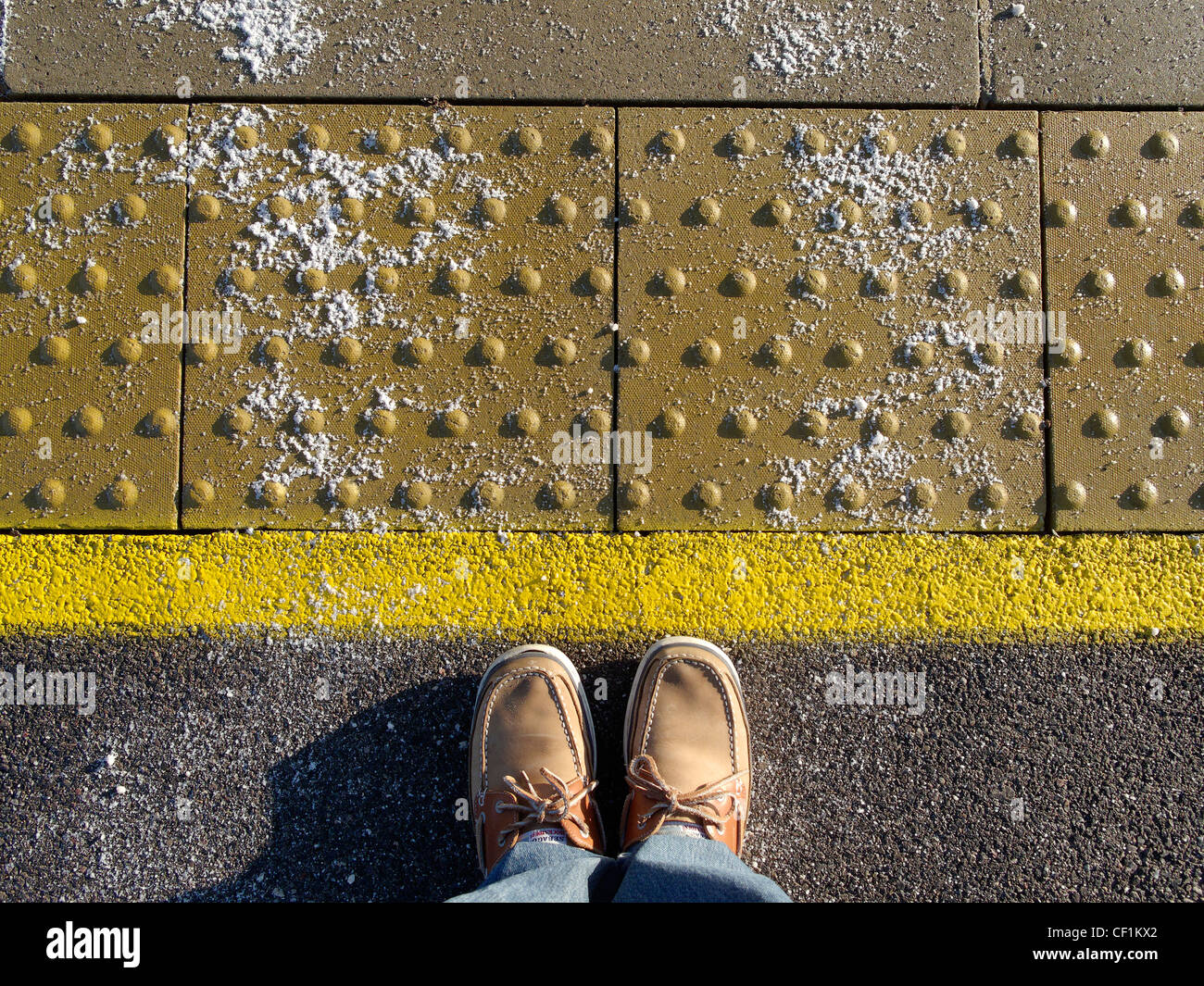Our film opening will be shot in several different locations, since the 'victim' (the protagonist of the opening who the audience follows) is on a journey to hide the mysterious package. The different locations meant that we had to be aware of the changing risks and hazards from one setting to the next.
The Train Station
The sequence will start at the train station. Especially during the week, train stations are busy; not only could this interfere with continuity, it also presents some hazards. Firstly, we would have to film the shots of the characters getting off the train which requires a considerable amount of speed to avoid getting body parts caught in the automatic train doors. A busy station would affect the speed at which the shot could be taken exiting the train, because we would have to wait for passengers to board and exit before we could shoot. So, to avoid this hazard all together, we have chosen to film on Good Friday; a bank holiday means that trains will be less frequent but also a lot less busy!
A more obvious hazard at a train station would be the platform itself: to mind the gap between the train and the platform, and to stay away from the platform edge. To prevent any twisted or dislocated ankles on the platform, it is important to consciously take caution while stepping from the train onto the platform and the actor should pay extra attention to the positioning of their feet whilst being filmed. All in all, the general rules at a train station should be followed: stay behind the yellow line at all times, for example.


The Roads
The victim will travel along some streets during their journey to hide the package. The biggest and most obvious hazard here would be cars. To avoid being hit by a car (this mainly applies the the camera man), it is important that everyone stays on the pavement at all times and takes the appropriate precautions before crossing any road as usual. Another way to eradicate this hazard is to shoot on quieter suburban residential streets where cars are less frequent and audible. This would also avoid background noise from passing cars, which would make intentional noises more difficult to hear and extract.


The Woods
The woods presents several less-dangerous hazards for the film cast and crew. Both the victim and the protagonist will have to make their way off-path in order to maintain verisimilitude, and the undergrowth can contain stinging nettles and brambles which cause harm. To prevent getting stung or scratched, long sleeved garments should be part of the actor's costume and a path should be selected with less plants.
Discarded waste is also common in the woods, including glass bottles and sharp scraps of metal. Due to the potential risk of cutting skin, the litter should not be touched at all; after all, any visible litter in the frame could be used as unintentional props to make the setting more realistic for the sequence.
Logs and sticks on the path may result in people tripping over which could cause a range of different injuries. The only way to avoid this hazard is to clear the pathways that are chosen for the actors and film crew by simply picking up the logs and sticks that present a risk and place them away from the path.
To get high-angle shots, we will use the surrounding trees to help immerse the audience into the action and make them feel like they have a god-like third-person perspective of the event that is taking place. To get the camera this high, the cameraman would have to climb a tree. Although they may only be three feet above the ground, this does not mean to say that they would be free of injury if they fell. The trees in the planned location are also relatively thin and smaller branches are more likely to snap. To prevent this, branches must first be checked to ensure that they are thick live branches. Live branches that are thick enough to hold the weight of a human being will should not break. The cameraman must then look to guarantee that they will be able to safely get down from a branch before they begin to climb. To further eliminate the risk of injury from falling, a general rule will be put into place on the day of shooting that 'nobody must climb onto a tree branch that is more than two feet above the ground'.

Costuming and Props
There are parts of the costume and props that will be used in the sequence that could hurt actors if not used with care. For instance, both costumes include shoes that have shoelaces. If the shoelaces are not secure and come undone, the actors will trip, especially since the film opening involves running for both characters. This is easily addressed by double-checking that the shoelaces are tied before each shot is taken.
The antagonist wears a black scarf over their whole face as part of their costume, which dramatically affects their visibility. Although they can still see through the scarf, it is very important to clear all pathways of trip hazards and to only begin filming while there are no members of the general public in the area. The actor who plays the antagonist should familiarise themselves with their surroundings without the mask beforehand in order to make themselves aware of any irremovable hazards (such as trees and low branches).


No comments:
Post a Comment